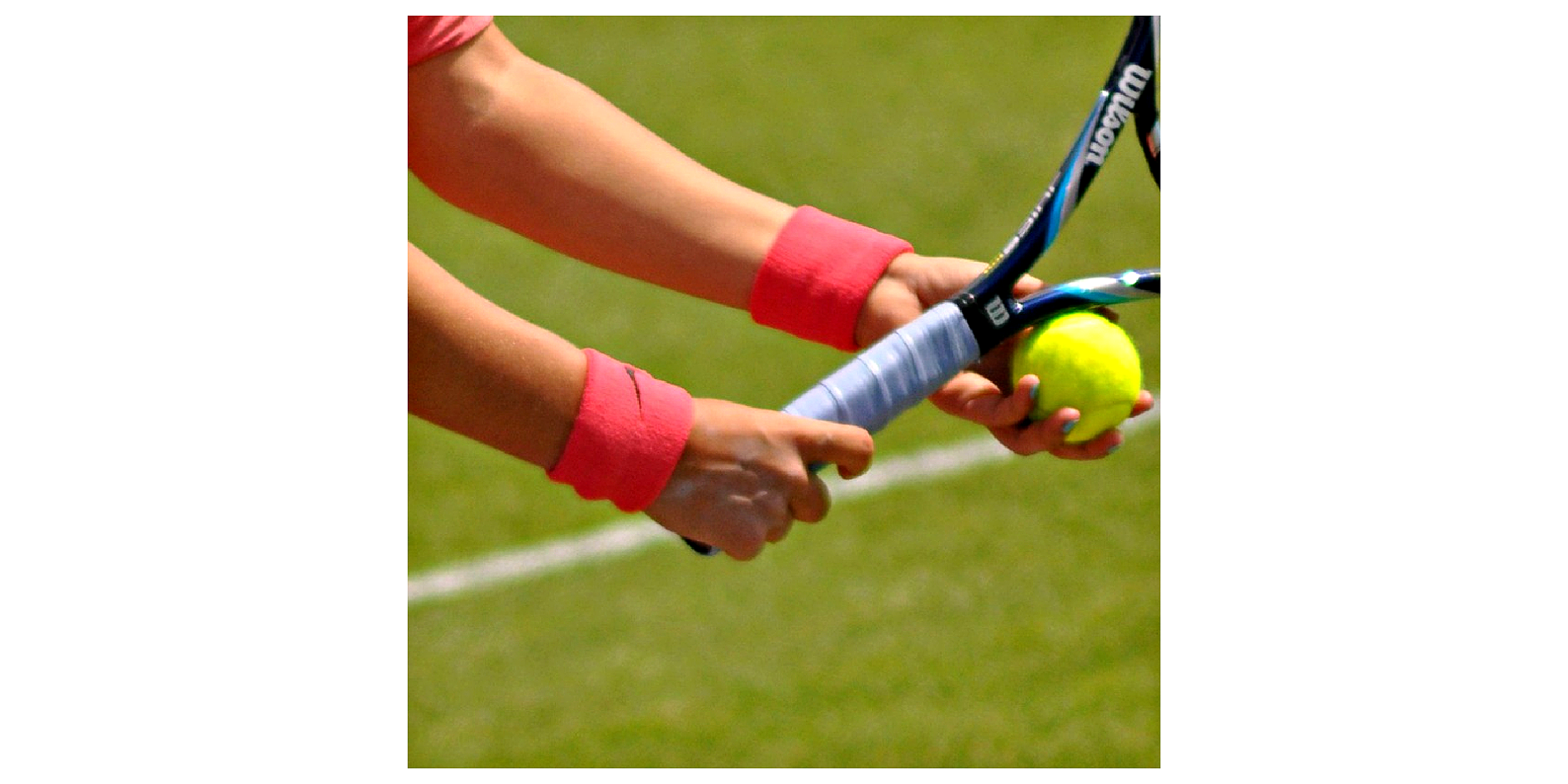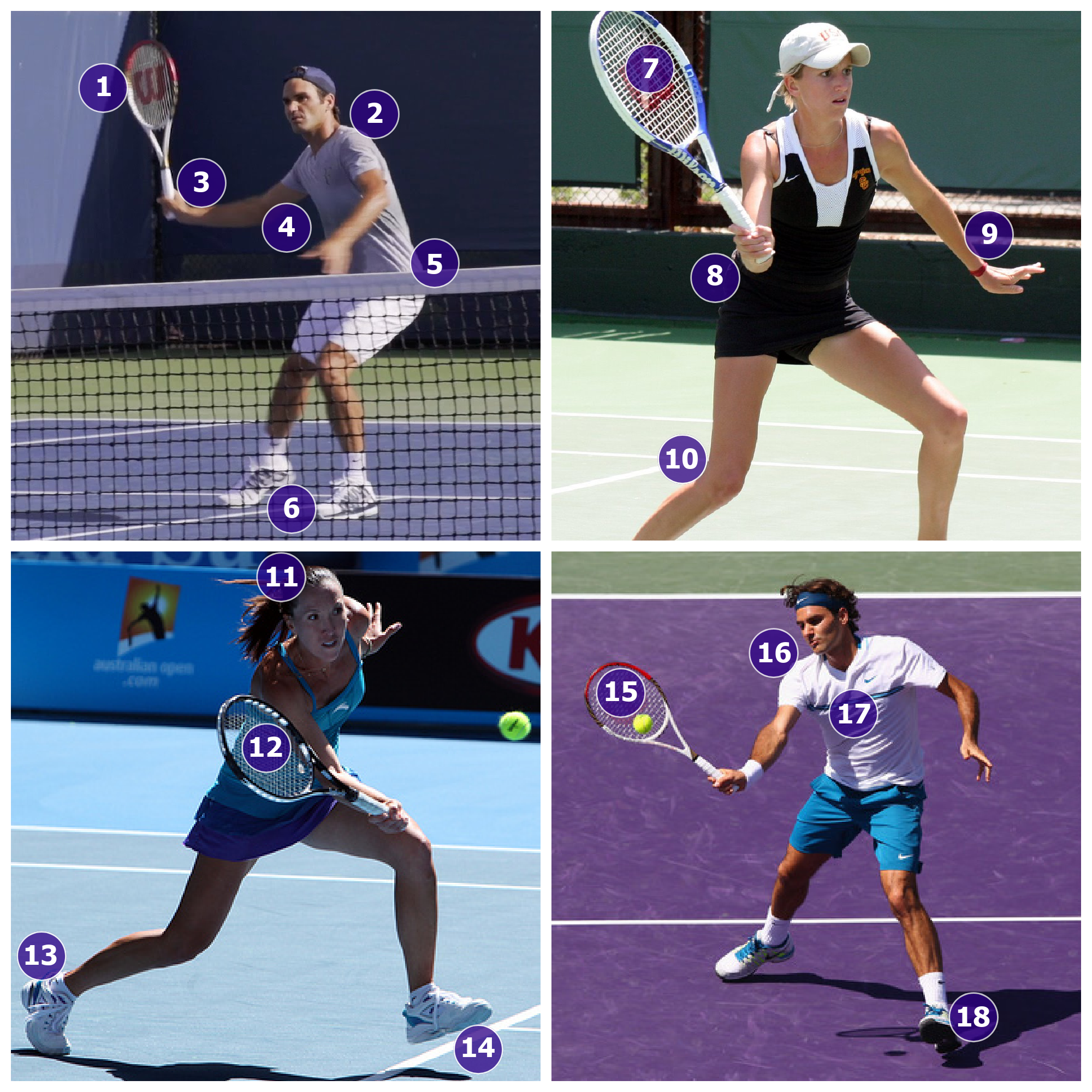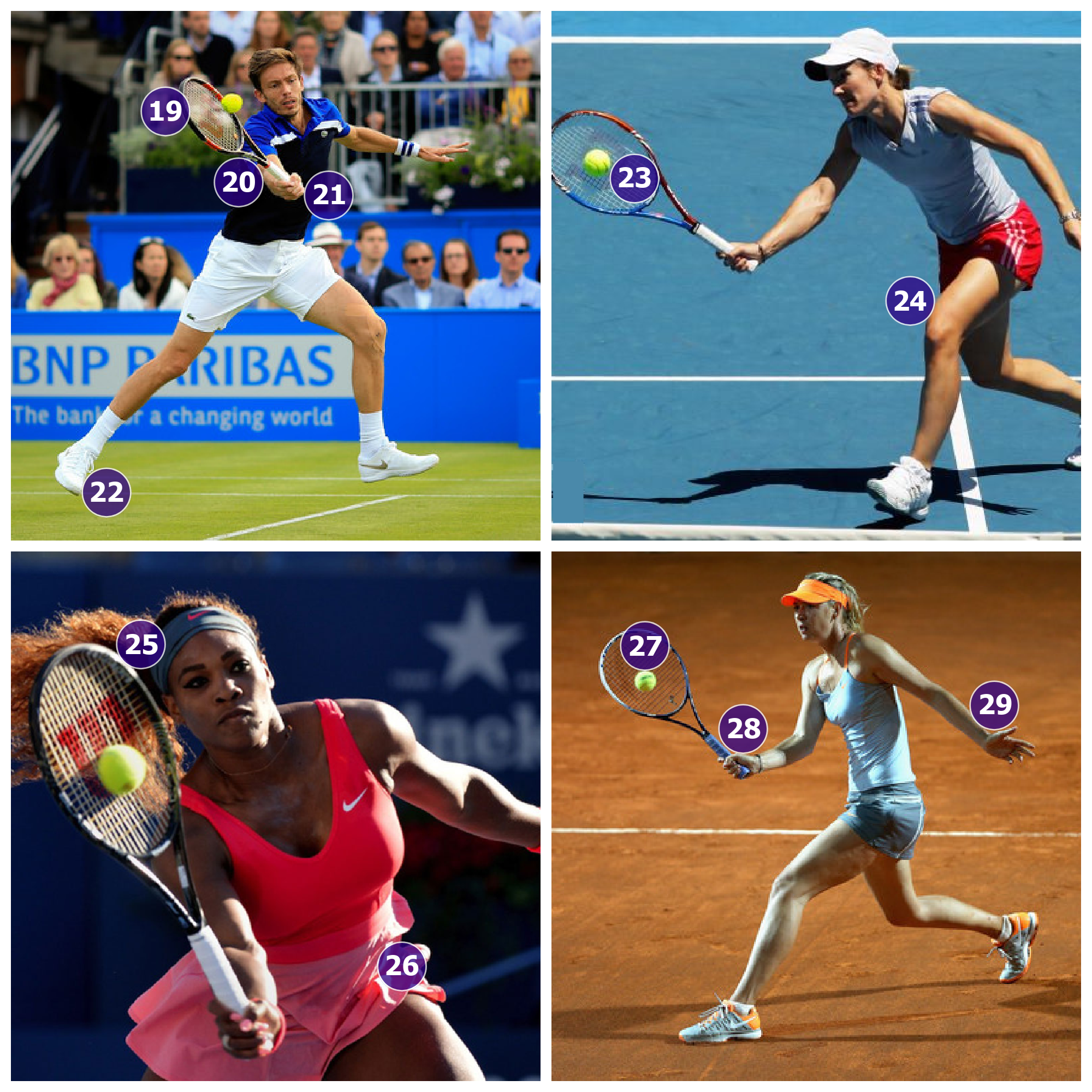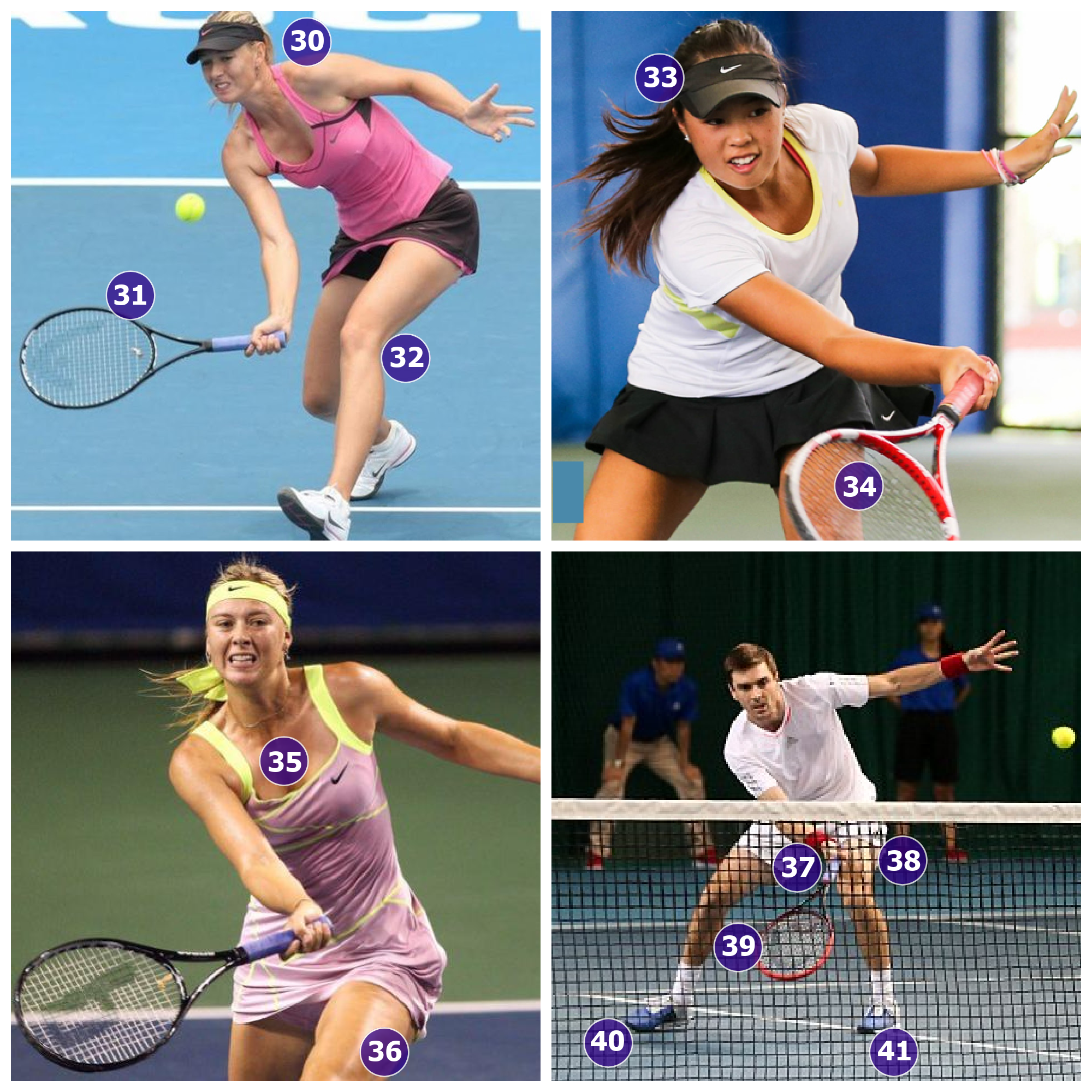
FOREHAND VOLLEY
Grip

Collapsible content
Continental Grip
- Used for Forehand Volley
Backswing

Collapsible content
Backswing Details...
1. Racket head up as shoulder opens up. Racket head stays above the hand during stroke.
2. Left shoulder turns closing the chest slightly.
3. Wrist flares, opening up the strings and keeping the "L" position.
4. Right elbow stays as close to the body as possible, depending on the distance to the ball.
5. Hips turn with the step to the ball.
6. Feet shift allowing the body to turn.
7. Racket head lays back slightly, never going behind the body, except on a high, slow floater.
8. Hips begin to turn, keeping the body in a low, athletic stance.
9. Left hand comes apart as the the racket goes toward the ball.
10. Load up weight onto right knee, ready to explode into step.
11. Head and shoulders are low and as close to the contact point as possible.
12. Strings are tilted slightly upward prior to contact.
13. Right foot strongly pushes off the ground into the stroke.
14. Left leg takes huge step into ball. The direction of the step depends on the location of the ball.
15. Racket head moves high to low into the contact point.
16. The shoulder controls the shape of the swing as the rest of the arm is firm and stable.
17. Chest begins to open up slightly as racket goes to the ball.
18. As the front foot steps into the ball, the entire body should continue moving forward, with the possible exception of stopping on low balls.
Contact Point

Collapsible content
Contact Point Details...
19. Contact point is always in front of the body.
20. The bend of the elbow is determined by the distance of the ball.
21. Wrist remains flared in an "L" position throughout the contact point.
22. Back foot is off the ground, following the momentum of the step.
23. The racket continues moving downward, through the ball, with slightly open strings for backspin.
24. Front knee is flexed as the body keeps moving through the contact point.
25. Head and shoulders remain as close to the point of contact as possible.
26. Hips stay low, keeping the body athletic and balanced. The height of the player during the stroke depends on the height of the ball.
27. Racket head is always above the hand at the contact point, even on low balls.
28. Hand holds a firm grip at contact.
29. The left hand may extend from the body, often for balance, especially when stretched out, reaching for the ball.
Follow Through

Collapsible content
Follow Through Details...
30. Left shoulder begins to open on the follow through as the body moves forward.
31. The racket head continues to naturally move downward in a very abbreviated follow through.
32. The body should be at the level of the ball. The height of the stance during the stroke will depend on the height of the ball.
33. Head remains turned, close to, and facing the contact point.
34. Strings continue to face up, giving the ball backspin.
35. Chest is now opening as player continues to move forward.
36. Weight is now on front leg as foot steps.
37. The racket remains in an "L" position.
38. After completing the stroke, the player should be balanced and ready to keep moving.
39. Racket remains on the hitting side of the player for the entirety of the stroke, and never pulls across the body.
40. Right heel should be lifted with toes touching the ground.
41. Weight finishes on left foot after stroke.

